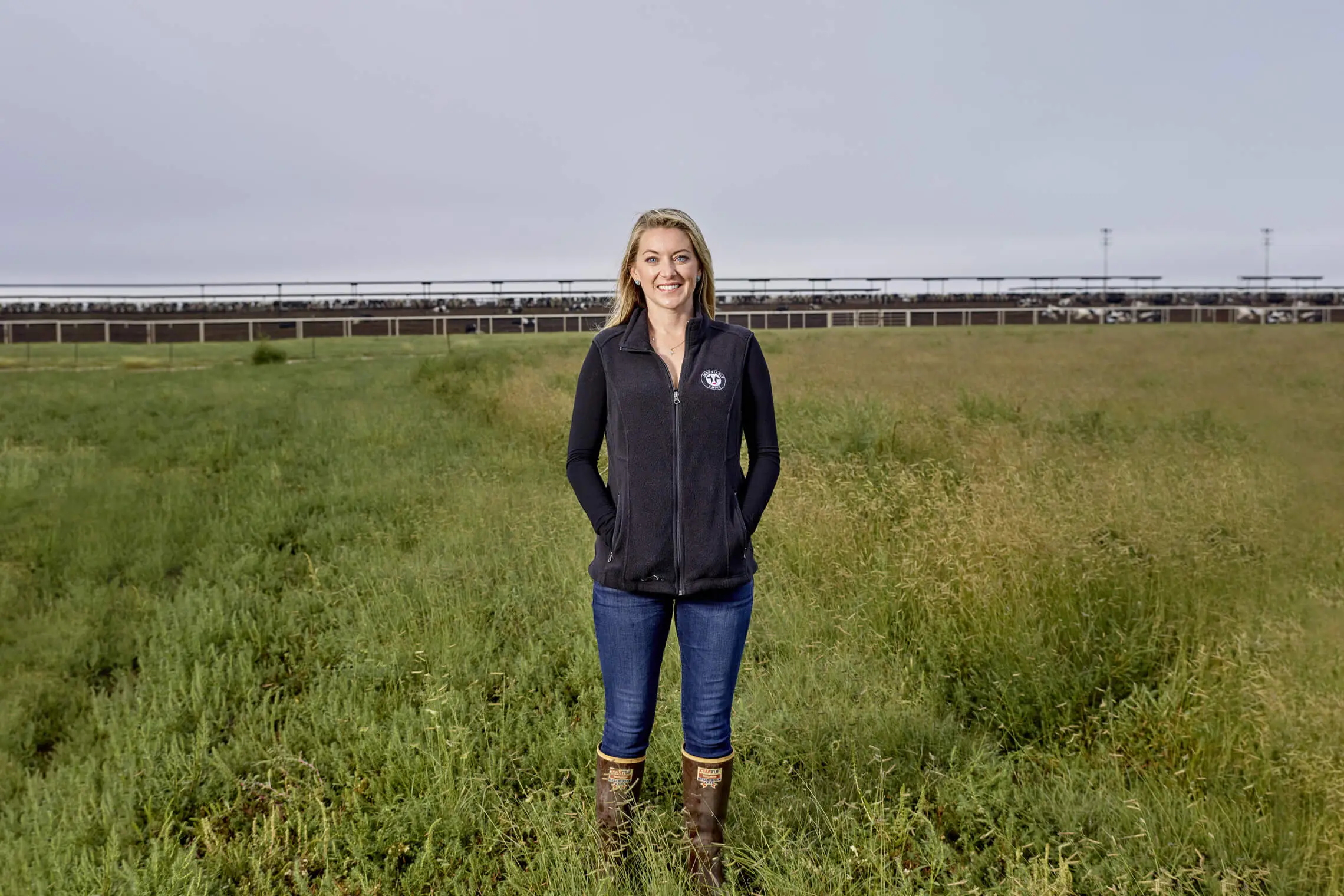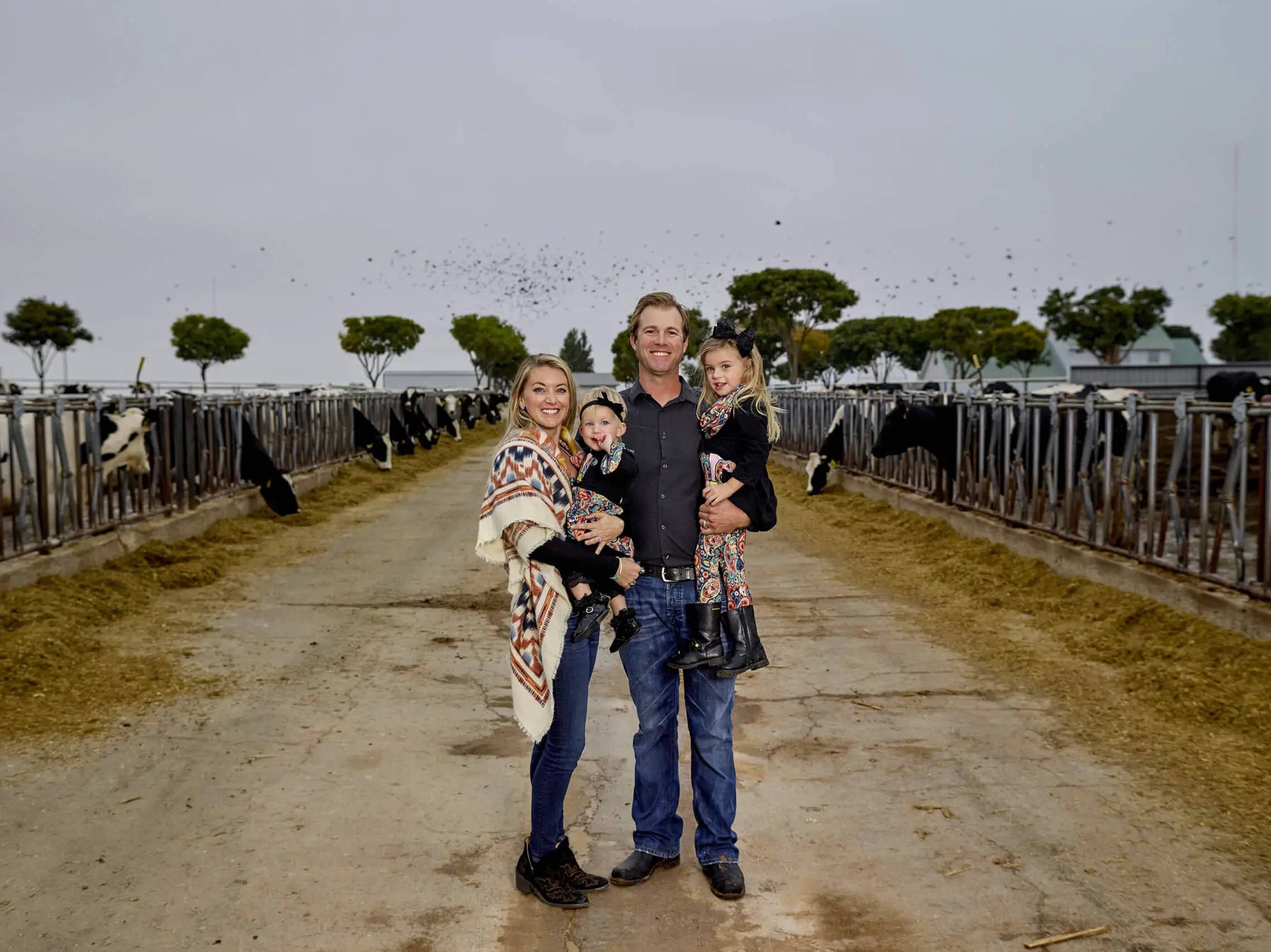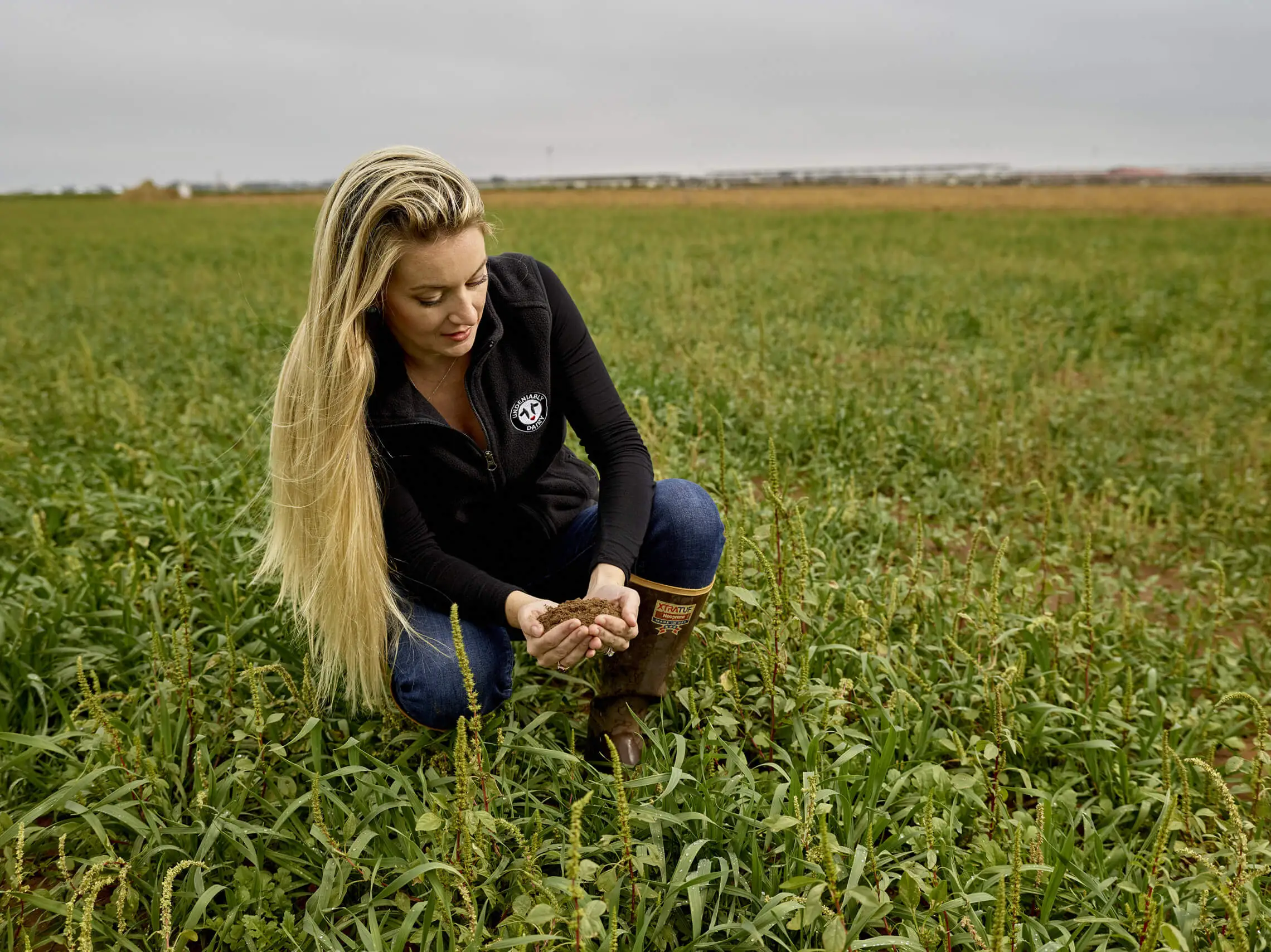This Fifth-Generation Dairy Farmer Puts the Land First
Tara Vander Dussen can’t imagine a life without dairy. She’s a fifth-gener-ation dairy farmer and environmental scientist who’s passionate about the technological innovations that help farmers care for the land and their cows.
With A Big Family Farm Comes Big Responsibility, And A Big Sense Of Community
By Mélanie Berliet PUBLISHED ON 10/26/2018
When Tara Vander Dussen first went off to college, she thought she was escaping the family farm on which she grew up. Instead, leaving town ended up teaching Tara just how devoted she is to dairy farming.
“I realized that I would never stop loving dairy,” explains Tara of the time she spent away at school.
After earning a degree in environmental science, Tara returned home to embrace farming enthusiastically. Slowly but surely, she established herself as a vocal industry leader known as the New Mexico Milkmaid.
The New Mexico Milkmaid embodies the spirit of family farming
“Ninety-seven percent of dairy farms are family owned and operated and we’re no different. We’re all here every day,” says Tara of the dairy farm she inhabits with her husband and their two young girls.
As a fifth generation farmer, Tara says that raising her family on a farm comes naturally because it’s all she really knows. While their lifestyle is unique, she wouldn’t have it any other way. Her children live in a home that sits roughly 200 feet from the farm. Their daughters count Gilbert, a herdsman, as one of their best friends because he takes them to see the animals regularly. The familial vibe really extends to everyone involved in working at the dairy.
Tara enjoys sitting down to family lunches and dinners every day. She thinks of it all as an adventure—one with valuable perks. “Growing up on a farm instills a solid work ethic in you,” she says, touching on her firsthand experience. “I grew up building forts in the hay barn, but I also learned important lessons about caring for animals and the land around you.”
How scientific knowledge informs daily decisions on the dairy farm
Tara applies her background in environmental science every single day. Her curiosity about the environment was a natural offshoot of being raised on a farm.
“Growing up, we drank well water. If your well breaks down in the middle of the night, you learn real quick where that water comes from, and you start to think about water and the environment more mindfully.”
While a lot of people think about sustainability in terms of world-changing measures, Tara explains that the simplest changes can often make a big difference. For example, most dairy farms have a lot of hoses in the barn to keep everything clean. By placing nozzles and timers on the hoses so that they don’t constantly run and they shut off routinely, you can conserve a lot of water.”
Another simple but effective measure farmers can implement involves manure, which Tara calls “a great natural fertilizer for crops.” Effectively applying manure—not over applying and being conscious of the nutrients therein—is very important.
“Overall, being less wasteful can have a big impact,” Tara says. In her work with her own dairy farm and as a consultant to other dairies, she conveys this critical message regularly.
The better we take care of cows, the better they take care of us
In addition to conservation measures, cow care is of the utmost importance on a dairy farm. Because when cows are comfortable and well taken care of, their milk is of higher quality.
“I think people would be surprised to learn how much detail goes into cow care,” says Tara.
You want the barn to be quiet, comfortable, and welcoming. Bedding and shading are crucial because cows are creatures of habit and they appreciate a safe, carefully curated environment
A nutritionist with a PhD actually plans the cows’ diets. Depending on where a cow is in her life cycle, she has a unique diet. So at any given point, there are five separate rations being prepared for different subsets of cows on the farm.
Additionally, Tara and her family employ a veterinarian to check in on their cows regularly. “We have a third party come out and evaluate our practices to ensure that we’re doing everything we can for our cows,” she says. Adding, “Everything we do comes back to cow care.”
Caring for the community beyond the farm
A sense of community makes rural living truly special for Tara and her family.
Quite simply, that means socializing with neighbors frequently. Tara often pops by a friend’s house for an impromptu barbecue, inviting passersby to join the fun. But there’s also a more conscientious aspect to living in such a tight-knit community.
For the last seven years, Tara has served as the President of United Dairy Women, a charity committed to providing local children’s homes with three servings of dairy a day. These organizations welcome kids with no other place to go and supplying them with the dairy products they need to feed the children is extremely helpful.
“It’s wonderful to be able to provide essentials like milk and cheese but also fun things like ice cream to the kids,” says Tara.
When discussing the future of her own dairy farm and the industry in general, Tara cites a favorite old saying: Live as if you’ll die today, but farm as if you’ll live forever. As a farmer, Tara is always thinking about passing things onto the next generation.
She also believes in the importance of being more vocal as a contemporary farmer. Since most people are removed from the realities of agriculture, she thinks it’s critical for farmers to help people understand where their food comes from. It’s not realistic for everyone to visit a farm, but social media provides a great way for regular people to engage with farmers, and Tara understands that. She’s been blogging for two years, and her Instagram account is growing rapidly.
More than educating people, Tara focuses on engaging with them—listening to their questions and concerns, and providing knowledgeable answers in return. “People just want to know about the food they’re eating and its impact on the environment,” she says. Tara sees the digital landscape as an extension of her real life dairy community, and an opportunity for her to reach people and spread accurate, helpful information about dairy farming.
Article originally published on Thought Catalog





















